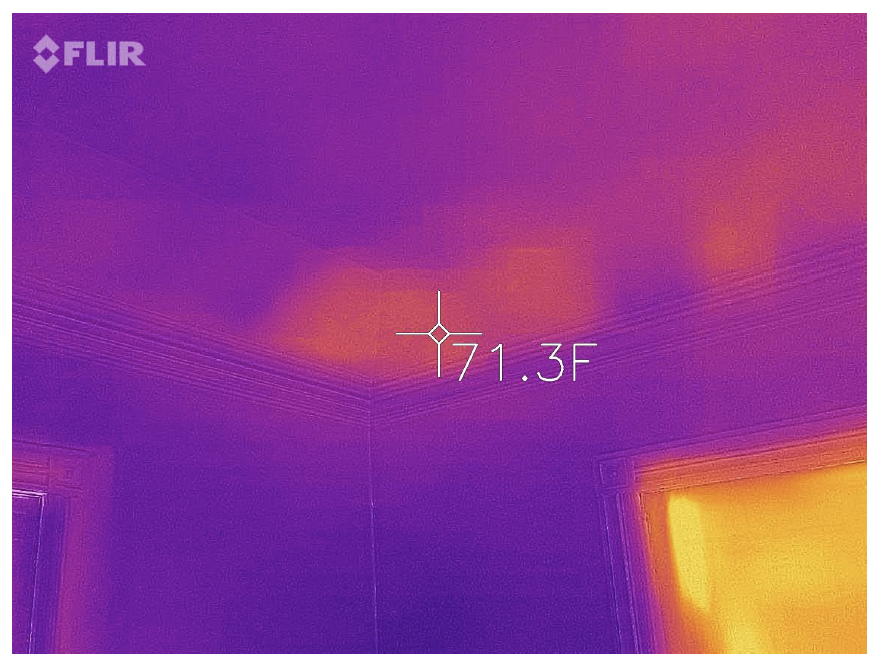Environmental preservation is a central part of the Aslan Foundation’s founding mission and is core to many of our projects. When the Foundation purchased the Eugenia Williams House, it had been vacant for thirty years. However, the Foundation soon learned that a large hive of honey bees had inhabited it. The hive was living inside the wall of the west bedroom on the second floor of the house. Thermal images were taken to learn more about the hive’s exact size and location. In the pictures below, you can see where temperature spikes indicating hive activity.
Because of their location and the potential for disturbance, we determined that a more permanent home for the bees would need to be found before any restoration could occur. Luckily, the Aslan Foundation’s Loghaven Artist Residency provided a spacious, potential new home with over ninety wooded acres. The Foundation’s Director of Properties is a beekeeper who helped develop a plan to re-home the bees to their beautiful new hives at Loghaven.
Like any move from one home to the next, coordination, teamwork, and timing were needed. Since the hive was located inside a wall painted with lead paint standard in the house’s day, the Foundation first brought on Helton & Associates to carefully remediate the lead before moving the bees. A few weeks before the move was to occur, a part of the hive swarmed, leaving the house and taking up temporary residence on a tree limb (see photo). When bees swarm, they first land at a temporary location with the queen while “scout bees” are sent out to search for a permanent new home. We were lucky to find the swarm on the limb before they left for good. Our property team took down the limb by hand and safely transported the bees to their new hive a little earlier than we anticipated!
Although this re-homed half of the hive, an additional portion of the hive still lived inside the Eugenia Williams House walls. The next step was to bring in a construction team from Johnson & Galyon to help remove clay roofing tiles to access the hive. We also worked with local bee experts, Pa-paws Apiary, who provided additional and knowledgeable helping hands. With the clay tiles removed, the apiary team could access the bees to safely move the remaining population to their new home to continue pollinating and benefitting their natural surroundings.




